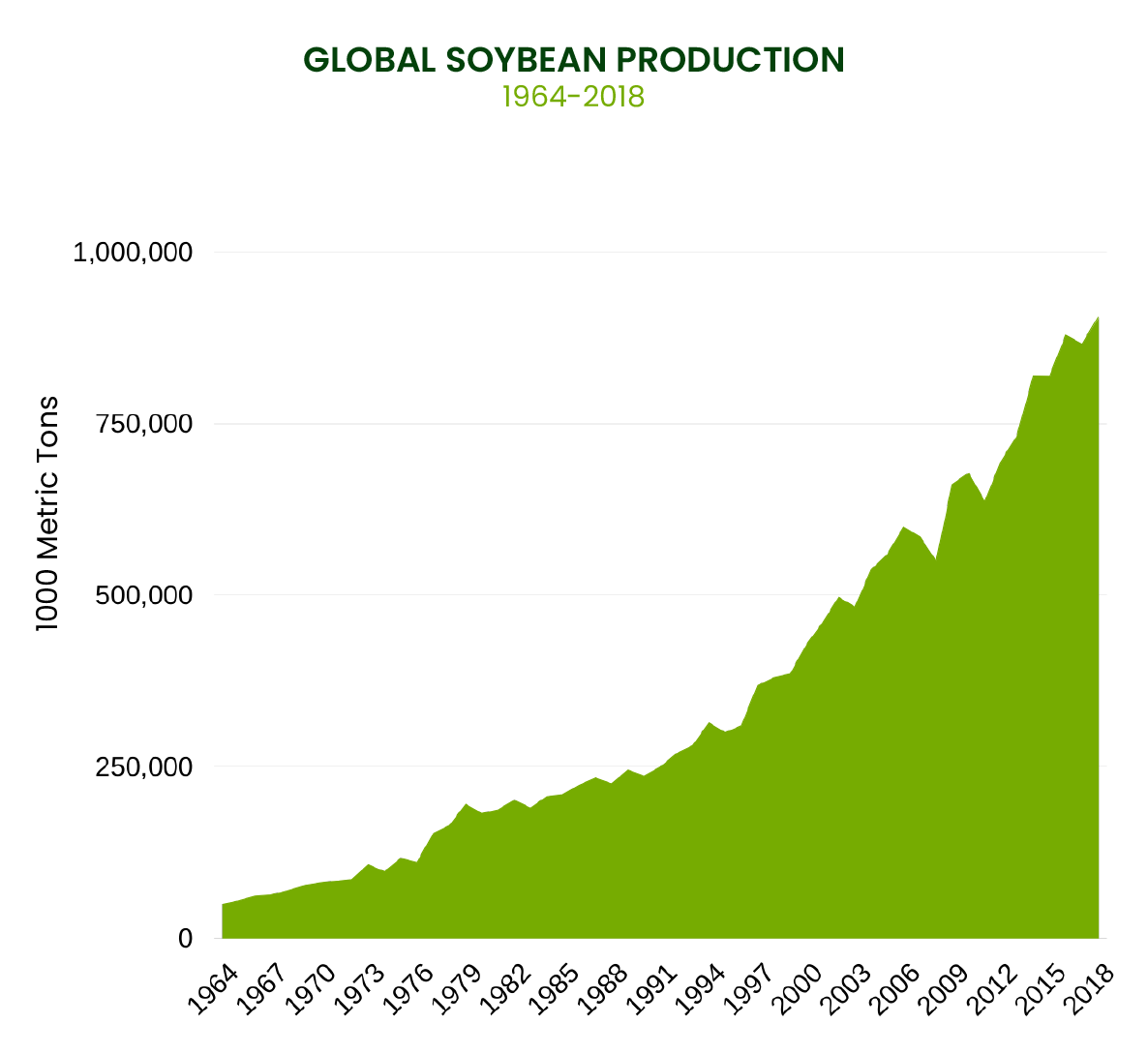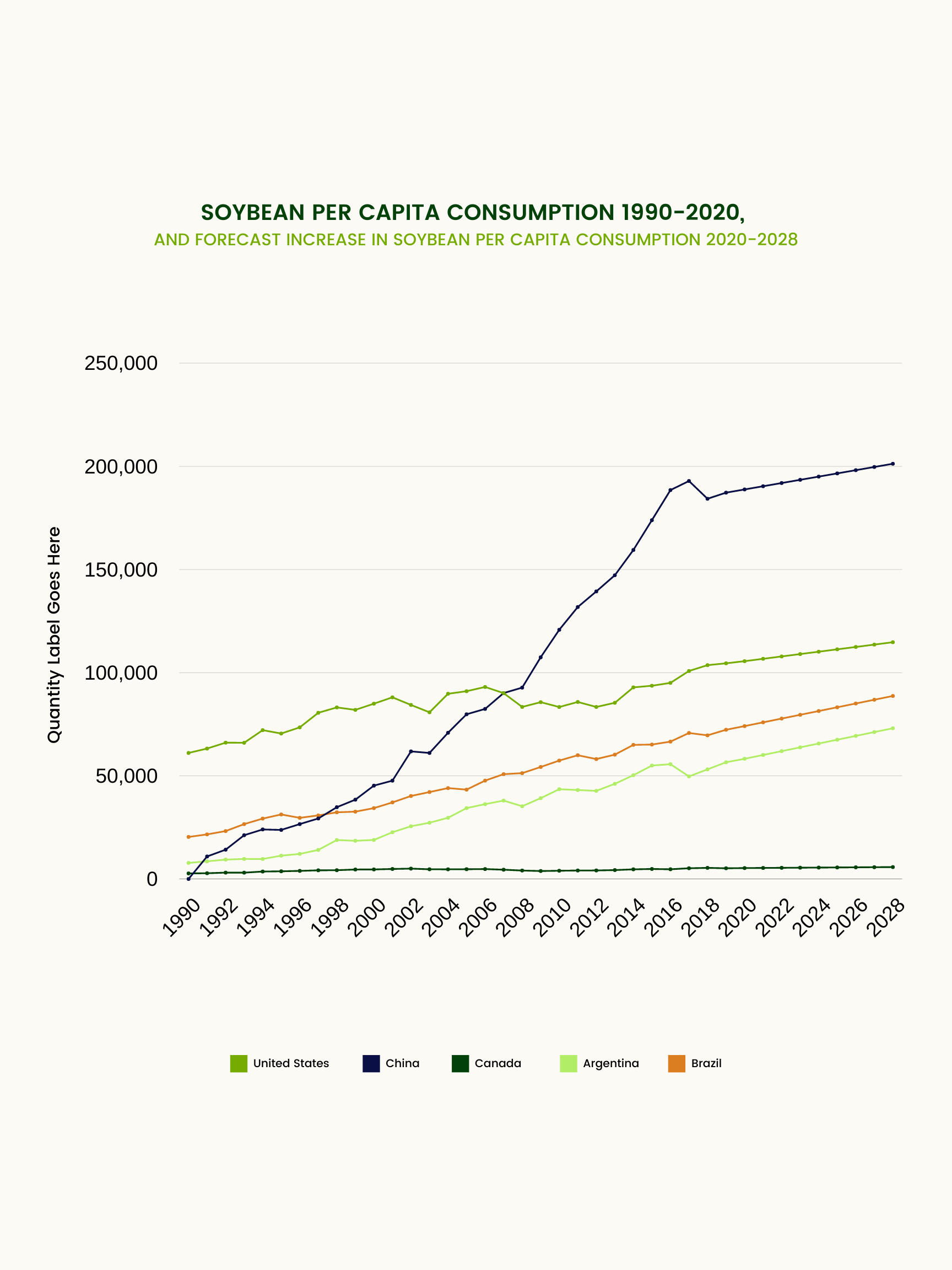
Global demand for soy is driving destruction of natural habitats throughout South America which provide essential ecological, economic and social benefits locally, regionally, and globally. It is possible to meet the demand for soy without further destruction of these regions by producing soy on land that has already been cleared. Protecting these important regions requires coordinated support from stakeholders across the entire soy value chain.
Soy has become one of the most widely grown crops in the world (fourth by production area and economic value)1 and one of the most important global commodity crops. Global production increased sixfold from the early 1960s to 2018 (see figure x), driven largely by increasing consumption of animal products, particularly in emerging markets. Most soy (75% by weight) is used as animal feed in the production of meat for human consumption. Only about 6% of soy is used for direct human consumption in products like tofu, soymilk, and textured vegetable protein; another 14% is used as edible oil, for cooking and the production of processed foods.2
It is possible to meet the global demand for soy without further destruction of these regions by producing soy on land that has already been cleared and is suitable for soy production. Interventions such as the Amazon Soy Moratorium, which focus on supply chain transparency, demonstrate that coordinated action from the private sector, governments and civil society, can help to reduce soy-related deforestation by creating pressure for more sustainable production in these regions. Deforestation rates declined in some areas from the mid-2000s, partly as a result of such interventions. But high levels of deforestation continue in all four regions. Protecting these important regions requires coordinated support from stakeholders cross the entire soy value chain.
Global demand for soy is expected to continue to grow. Per capita consumption is forecast to increase globally by 18% between 2020-2028, with most of the growth in demand coming from China3 (see figure x).
Over half of global soy is produced in three South American countries, Brazil, Argentina and Paraguay, and in 2019 Brazil overtook the United States to become the largest soy producer in the world.4 Soy from South America is favoured in many markets because it has a higher protein content than soy grown in other regions. The amount of land used to grow soy in South America increased by more than 200 times between 1961 and 2017, from 0.26 million hectares to 57 million hectares,5 and is expected to continue to grow in response to demand.

